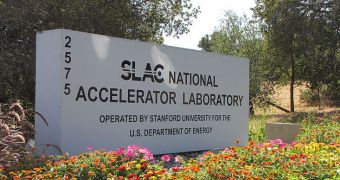For many years, physicists have been pushing the boundaries of science ever further, analyzing and dissecting events that would have sounded like science-fiction just a generation ago. At the forefront of the field are scientists from the SLAC National Accelerator Laboratory, a facility owned by the US Department of Energy (DOE) and operated by Stanford University. Researchers at the Linac Coherent Light Source (LCLS) facility have recently began analyzing the host of effects that applying intense X-ray free electron laser (XFEL) on materials has.
“The detailed physics is very important for most LCLS experiments since it determines the interpretation of the results. The unique thing about this experiment is that it was performed upstream from the LCLS mirrors, and so we had access to the full range of LCLS X-ray energies (which went up to 8 keV at the time),” SLAC scientist Stefan Hau-Riege explains. He adds that the laser which the team used for the research has a pulse length ranging from 10 femtoseconds to 100 femtoseconds. To put things into perspective, a femtosecond is equal to the quadrillionth part of a second. The laser light itself can reach an intensity of no less than 8 kiloelectronvolts (keV).
The target of the investigation was nitrogen gas, which experts from the DOE Lawrence Livermore National Laboratory (LLNL), the leaders with the research, bombarded with the highest X-ray energy ever used at an XFEL. The interactions between the beam and its targets, as well as the effects of the light on the gas were recorded and analyzed using a photoluminescence-based pulse-energy detector. Everything from electron dynamics to space charge effects became visible with the sensor. This level of observational capabilities was required because the key to such studies lies in understanding the precise dynamics at work at very small scales.
Another key to success in this field of research are the fourth-generation light sources that experts use. Facilities such as the LCLS, together with similar instruments currently under construction in Germany and Japan, exceed the capabilities of third-generation sources considerably. The latter instrument are stadium-sized synchrotrons, of the usual oval or round shape, but their beams lack the precision and speed needed to observe the behavior of individual atoms and electrons. Details of the recent achievements at SLAC are scheduled to appear in the July 27 online issue of the esteemed scientific journal Physical Review Letters.

 14 DAY TRIAL //
14 DAY TRIAL //